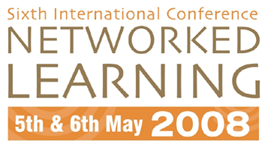

Networked Blended Learning
Creation of Best Practices for Continuous Improvement
Athanasios I. Margaris, Kerstin V. Siakas, Fotini Dimopoulou,
Amalia E. Pontikidou
Alexander Technological Educational Institution of Thessaloniki, Dept
of Informatics amarg@uom.gr, siaka@it.teithe.gr, fdimop@it.teithe.gr,
amapont@it.teithe.gr
Abstract
Education and learning is undergoing a worldwide change from the didactic model towards a learner-centred approach more sensitive to the needs of both the learners and the context in which learning takes place. Advances in Information and Communication Technologies (ICTs) have increasingly enabled global asynchronous interactive learning and teaching, thus offering greater flexibility and easier access to information in a life-long learning context. Also the Bologna Process for European Higher Education integration and various Quality Assurance procedures, as well as the emerging globalisation bring virtual networked academic courses into the scene.
As a result of these prevailing requirements in combination with emphasis on specification of objectives and learning outcomes, pressure on teachers to rethink and redesign their courses has emerged. Through active, adaptive and cognitive project-based learning, including authentic activities, problem solving and reflective thinking, networked learning can facilitate a supportive and affordable model of learning that can benefit many groups in society.
The department of Informatics at Alexander Technological Educational Institution of Thessaloniki responds to the new challenges by adopting a blended learning model that combines traditional classroom teaching and user-centred networked learning.
This paper reports experiences and findings from different blended courses in the department revealed in a first assessment of the teaching-and-learning practices . The aim of the assessment was to identify strengths and weaknesses of the current practices. The assessment was carried out by using a questionnaire completed by 119 students. Emphasis is put on students’ views regarding the current teaching-and-learning practices.
The findings reveal that the students consider that the most important advantages of e-learning environments are studies at own time followed by studies at own place. Concerning the disadvantages the most important factors are considered to be the student’s dependency on internet and technology in general. All students who take part in e-learning environments consider that their learning activities and outcome are improved and that e-learning provides independence and free choice of their personal learning strategy.
The ultimate outcome of the assessment aims at creating guidelines for the best practice in networked learning. A first set of guidelines for the best practice in networked blended learning presented in this paper was created based on the results from the student survey and experiences from discussions between educators. The guidelines aim at serving as a roadmap and initiating the development of a list of relevant best practices.
Continuous improvement of the research instruments together with regular assessments will ensure continuous improvement of processes and practices regarding networked blended learning.
This work is carried out as part of the E-LAMP (Spotlight
on Learning, Access,
Methodology and Pedagogic
in E-learning) project, sponsored by the Grundtvig Programme. This project
has been funded with support from the European Commission. This publication
reflects the views only of the authors, and the Commission cannot be held
responsible for any use which may be made of the information contained
therein.
| About NLC |
2008 Conference Papers
| Conference Committee| Keynote
Speakers
| Papers from previous NL conferences |Research Seminars| Current Conference
| Sponsors | Contact
|
